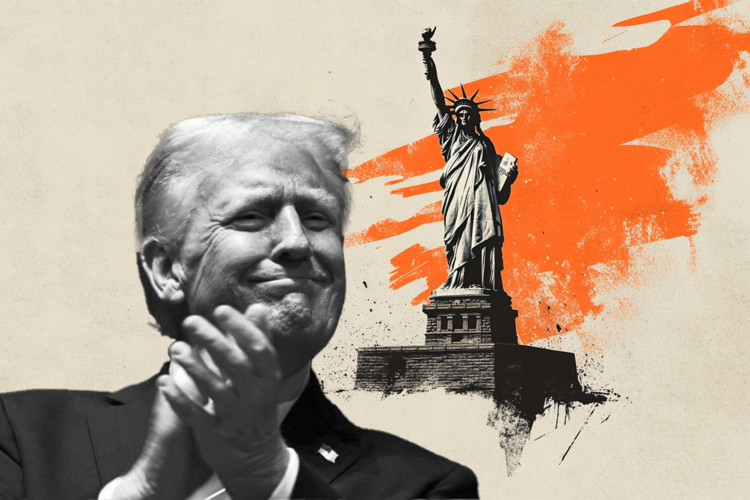Gold tilted to the downside as markets become unstable in volatile week
- Gold price tilts lower on Friday despite surging nearly 2% the previous day after the tragic breakdown in the Russia-Ukraine talks in Turkey.
- Meanwhile, questions arise about the stability and trustworthiness of the US Dollar.
- After a volatile week, Gold faces headwinds in holding $3,200 on Friday.
Gold (XAU/USD) price trades on the backfoot, struggling to hold near the $3,200 level at the time of writing on Friday while multiple questions and concerns arise in markets and amongst traders. First and foremost, the Ukraine-Russia talks looked to be dead and buried even before Ukrainian President Volodymyr Zelenskyy shook hands with Turkish President Recep Tayyip Erdoğan on the tarmac at Ankara. Russian President Vladimir Putin didn’t attend himself and only sent some low-level diplomats, who were rather seen as Russia taunting and pestering Ukraine.
This spurred several world leaders to lash out at Russia, threatening with more severe sanctions to force President Putin to the negotiation table. Markets are bracing for comments from United States (US) President Donald Trump, who appears to be not amused with the scenery, according to Reuters.
Meanwhile, the US Dollar (USD) is being challenged by markets, which would be a tailwind for XAU/USD. Volatility “in US risk assets and the dollar will lead more international investors to consider hedging more of their dollar exposure and globally diversifying their asset allocations,” Mark Haefele, chief investment officer for the Swiss bank’s wealth management unit, said this week. “Gold remains an important diversifier,” Bloomberg reports.
Daily digest market movers: Investors are looking for certainty in uncertain markets
- Progress on trade negotiations between the US and China has also sapped appetite for haven demand, adding to bearish headwinds for Gold as the standoff between the world’s two largest economies led to a sharp rebound in risk assets this week, Reuters reports.
- Investors need to diversify and hedge “to increase certainty about the value of their assets, especially when they have non-dollar liabilities coming due,” Mark Haefele, chief investment officer for the Swiss bank’s wealth management unit, said. “There doesn’t need to be a seismic shift in US exceptionalism for these trends to manifest themselves.”, Bloomberg reports.
- Precious metals sector consolidations are facing some headwinds. A major Chinese Gold producer is scouting for acquisition opportunities worldwide, although the recent price volatility driven by global trade turmoil means it’s not rushing to secure deals, Bloomberg reports.
Gold Price Technical Analysis: Buy the dip against profit taking
Headwinds and tailwinds, too many to sum up for Gold, are currently pushing the precious metal all over the place. It is no longer an easy picture, at least for now, and Gold is not one-directional as it was at the start of the year. Ultimately, the ‘last wind standing” will decide which direction Gold will head. Though for now, investors should keep looking at the $3,160 area to assess whether the Gold rally is still viable and intact.
On the upside, the pivotal technical level at $3,245 (April 1 high) is acting as resistance and could be difficult to reclaim. Once through there, the R1 resistance at $3,280 and the R2 resistance at $3,320 are the following levels to watch, though a major catalyst would be needed to get it there.
On the other side, the daily Pivot Point stands at $3,199, in line with the $3,200 big figure. In case that level does not hold on Friday, expect a move lower to test the support area around $3,160, with the April 3 high at $3,167 and the intraday S1 support at $ 3,160, before the 55-day Simple Moving Average (SMA) at $3,138.
XAU/USD: Daily Chart
US-China Trade War FAQs
Generally speaking, a trade war is an economic conflict between two or more countries due to extreme protectionism on one end. It implies the creation of trade barriers, such as tariffs, which result in counter-barriers, escalating import costs, and hence the cost of living.
An economic conflict between the United States (US) and China began early in 2018, when President Donald Trump set trade barriers on China, claiming unfair commercial practices and intellectual property theft from the Asian giant. China took retaliatory action, imposing tariffs on multiple US goods, such as automobiles and soybeans. Tensions escalated until the two countries signed the US-China Phase One trade deal in January 2020. The agreement required structural reforms and other changes to China’s economic and trade regime and pretended to restore stability and trust between the two nations. However, the Coronavirus pandemic took the focus out of the conflict. Yet, it is worth mentioning that President Joe Biden, who took office after Trump, kept tariffs in place and even added some additional levies.
The return of Donald Trump to the White House as the 47th US President has sparked a fresh wave of tensions between the two countries. During the 2024 election campaign, Trump pledged to impose 60% tariffs on China once he returned to office, which he did on January 20, 2025. With Trump back, the US-China trade war is meant to resume where it was left, with tit-for-tat policies affecting the global economic landscape amid disruptions in global supply chains, resulting in a reduction in spending, particularly investment, and directly feeding into the Consumer Price Index inflation.

